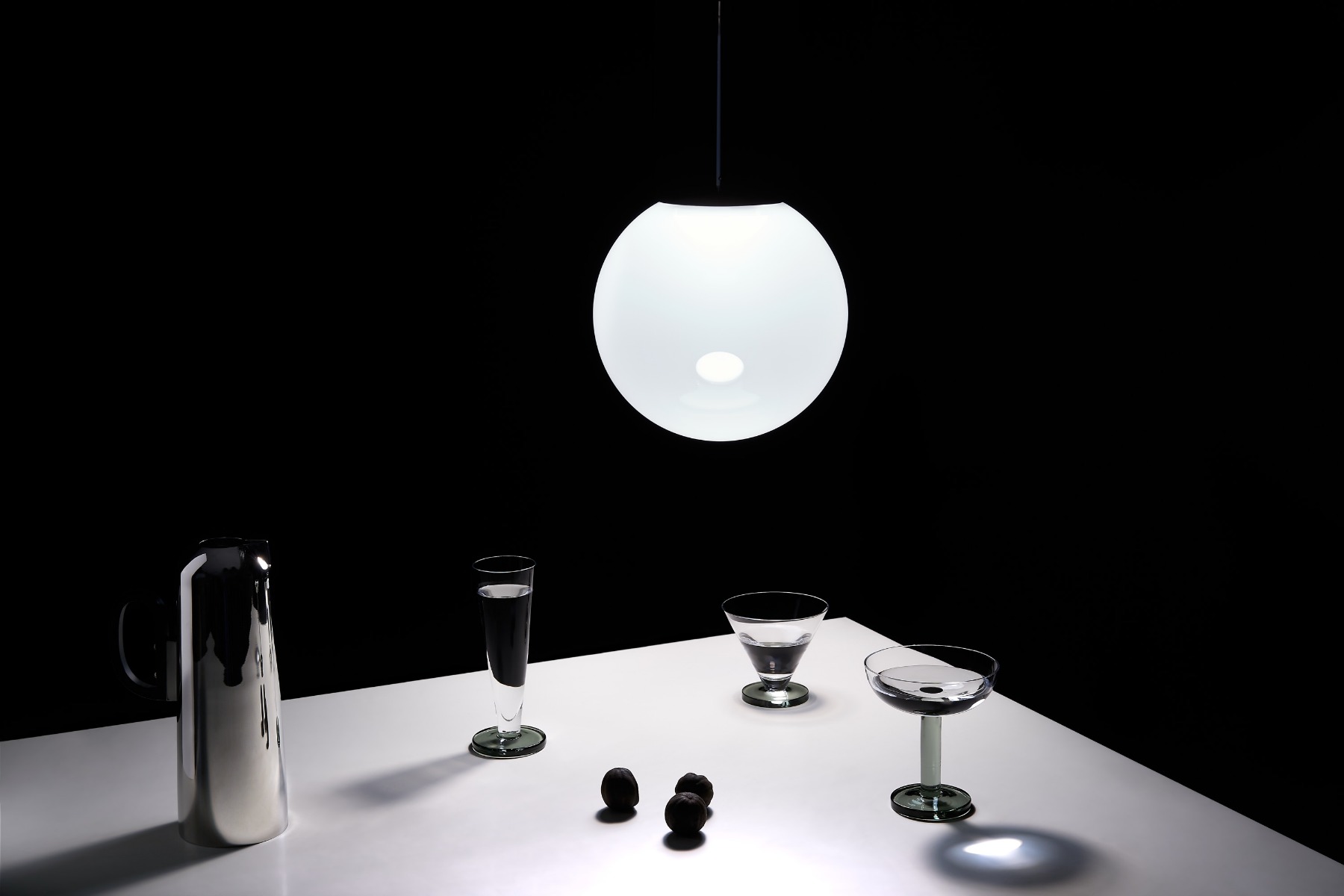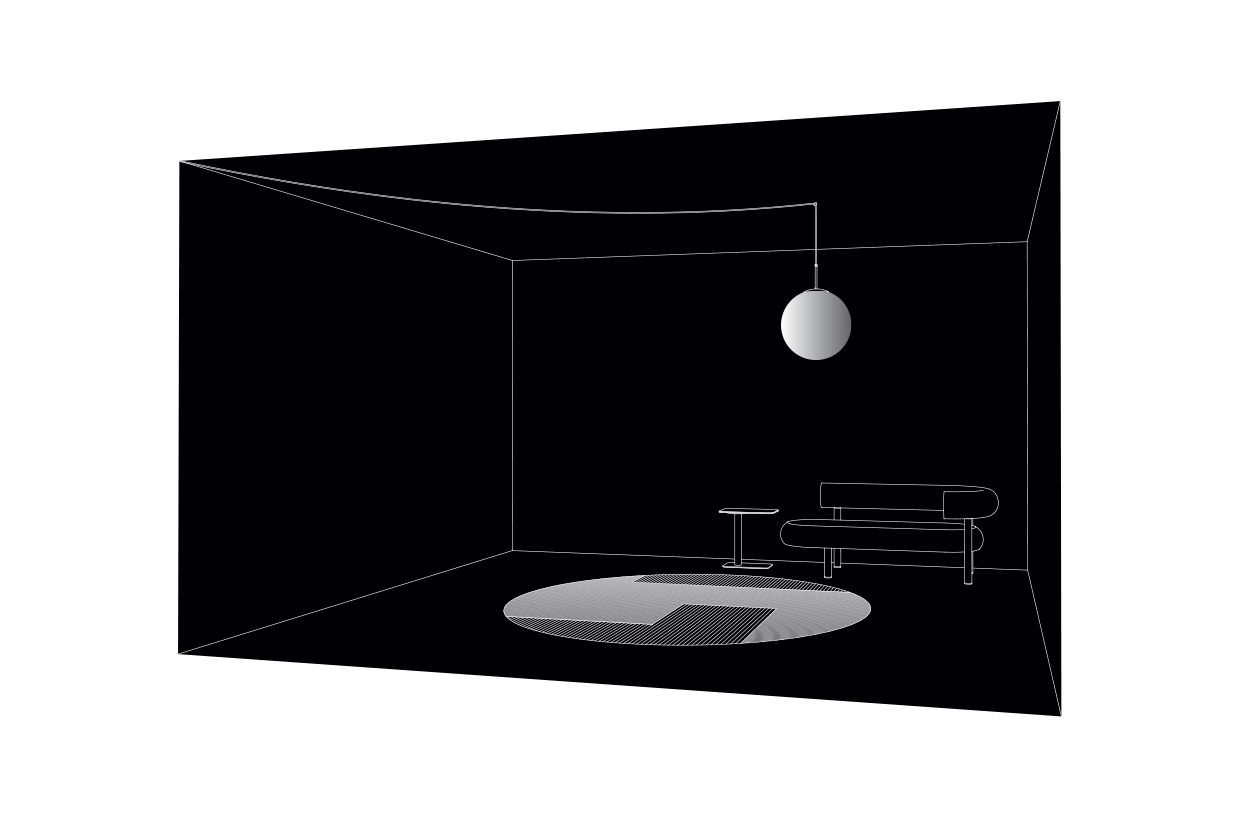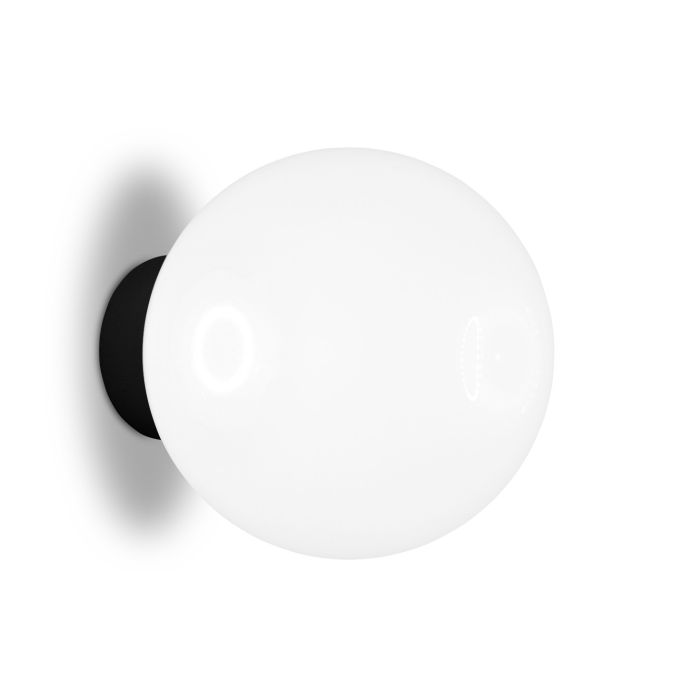The Moon: OPAL
"Opal is the simplest of lamps, just a complete spherical translucent white globe which gives an ethereal luminosity to any space"
- Tom Dixon
As a luminous object in the night’s sky, the Moon is somewhat misleading. An apparent beacon of luminosity in blackness of space it has in fact a dark, tarmac-like surface.
Earth’s constant companion and humanity’s longstanding chronological compass, the Moon has inspired, guided, and protected humans throughout time.
Due to the synchronous rotation of the Moon around the Earth, humans are unable to directly experience the dark side of the Moon. That doesn’t stop our long association with insanity and irrationality with a Full Moon.
Our collective acceptance between the correlation of a Full Moon with psychiatric admittance, traffic accidents and general anti-social behaviour is hard to separate. And despite the dozens of studies invalidating these claims we so often attribute lunacy with lunar events.

In reality, a Full Moon offers respite to any fear of the dark – by illuminating the dark landscape of night. It’s ethereal glow became a departure point for our OPAL lights. Large, perfectly spherical and giving a soft and diffused light, OPAL lights pay homage to our nearest neighbour and astronomical mainstay.
The lightweight opalescent polycarbonate enables the pendants to gently sway, casting a lunar glow over an interior. Like the Moon, it illuminates the darkness, navigating and influencing one’s movement and direction.
.
.
(HOW TO) Move Light
.
With OPAL we’ve included a 2.5m cable and we encourage you to not fix the light in one place. We take inspiration from Finland: using ceiling and wall hooks and the full length of the cable to position OPAL. Move the light around, put it in the corner, hang it low or leave it high. Use the flexibility to transform your space.
.
.
Performance
.
OPAL is not afraid of lighting performance. Where most of our lights are used for atmospheric or mood lighting, OPAL differs. It’s full opalescent glow performs very well at illuminating spaces. Our new 6W LED ring has a 800 Lumens output with 3000k warm white colour temperature.
.
.
Materiality
.

Plastic vs Glass.
Glass seems like a natural choice both environmentally and aesthetically. Not with OPAL, our opalescent spheres, for several reasons.
With the larger, 50cm-diameter, shade it would be incredibly challenging and impractical to use glass. Partly because it’s difficult to blow a sphere that big and also because it would be so fragile and heavy once made. You would have trouble hanging it as a pendant because it would tear your ceilings down - so there’s a reason to use plastic here. Likewise with the floor lamps. We can easily add a lightweight globe to the end of an arc or pole that won’t topple over.
With OPAL, the opalescent polycarbonate gave us the ability to create something resembling phosphorescence or something radioactive. A permanent use of plastic that gives an eternal ethereal glow.

Opal Lampada a sospensione 25 cm
Collaborando coi nostri ingegneri partner tedeschi abbiamo creato una personalissima ricetta a base di policarbonato opalescente il cui risultato è questo globo, adeguatamente etereo. Abbiamo deciso di eliminare la solita lampadina appesa e di sostituirvi il nostro nuovissimo disco LED, producendo un dispositivo per l'illuminazione estremamente potente.

Opal Lampada a sospensione 50 cm
Collaborando coi nostri ingegneri partner tedeschi abbiamo creato una personalissima ricetta a base di policarbonato opalescente il cui risultato è questo globo, adeguatamente etereo. Abbiamo deciso di eliminare la solita lampadina appesa e di sostituirvi il nostro nuovissimo disco LED, producendo un dispositivo per l'illuminazione estremamente potente.

Opal Applique da parete 25 cm
Collaborando coi nostri ingegneri partner tedeschi abbiamo creato una personalissima ricetta a base di policarbonato opalescente il cui risultato è questo globo, adeguatamente etereo. Abbiamo deciso di eliminare la solita lampadina appesa e di sostituirvi il nostro nuovissimo disco LED, producendo un dispositivo per l'illuminazione estremamente potente.










